Einkorn sourdough starter is as easy to make as regular sourdough starter, only with einkorn flour. Once you have your einkorn sourdough starter up and running, it’s easy to make 100% einkorn recipes, such as sourdough bread, muffins, pancakes, pizza, bagels, and more.
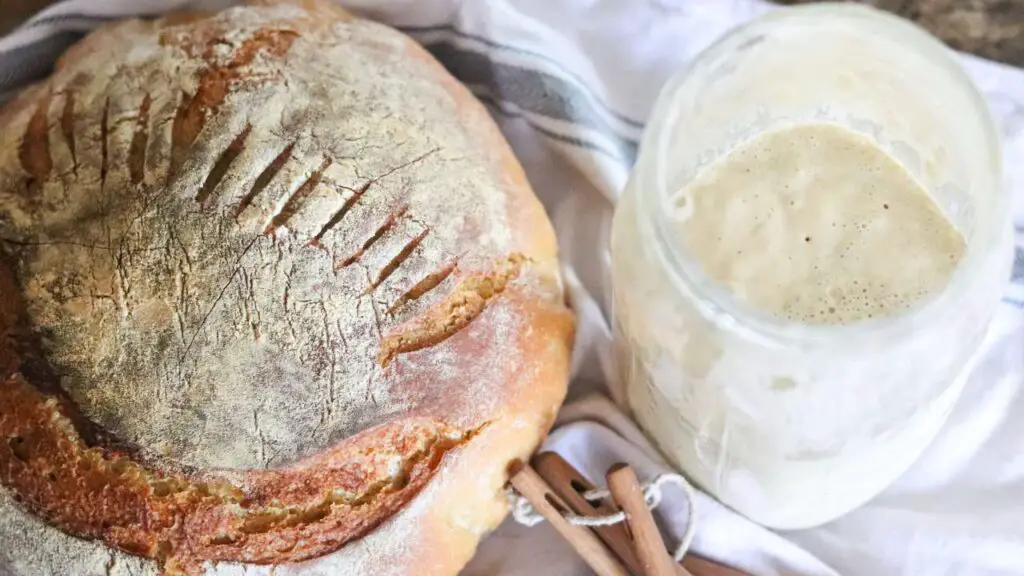
Einkorn sourdough starter is as easy to make as regular sourdough starter, only with einkorn flour. Once you have your einkorn sourdough starter up and running, it’s easy to make 100% einkorn recipes, such as sourdough bread, muffins, pancakes, pizza, bagels, and more.
Why I Chose Einkorn Sourdough Starter
I’ve loved using einkorn flour for the last 5 years in our home. I like to make everything from pizza crust to muffins to pancakes and bread. My family also really enjoys the Jovial einkorn pasta.
We chose einkorn because it is a healthier grain than today’s all-purpose wheat. Einkorn is non-hybridized, which means during the growing process, it’s left in it’s original form and not altered to produce a higher crop. Because of this, it contains higher levels of protein, nutrients, and antioxidants, and it also has a lower content of gluten.
This is why many people who are sensitive to today’s wheat can eat einkorn flour and digest it without an issue. Read more about the benefits of einkorn here.
Recently on my Instagram account I had someone reach out to ask if I had a tutorial for einkorn sourdough starter because it’s the only grain she can tolerate. I had already had that in the back of my mind so of course I got started on it right away. And, it was even easier than I thought!
This post contains affiliate links, which means I may make a small commission off items you buy at no extra cost to you. As an Amazon associate, I earn on qualifying purchases. See my full disclosure here.
Pin it for Later!
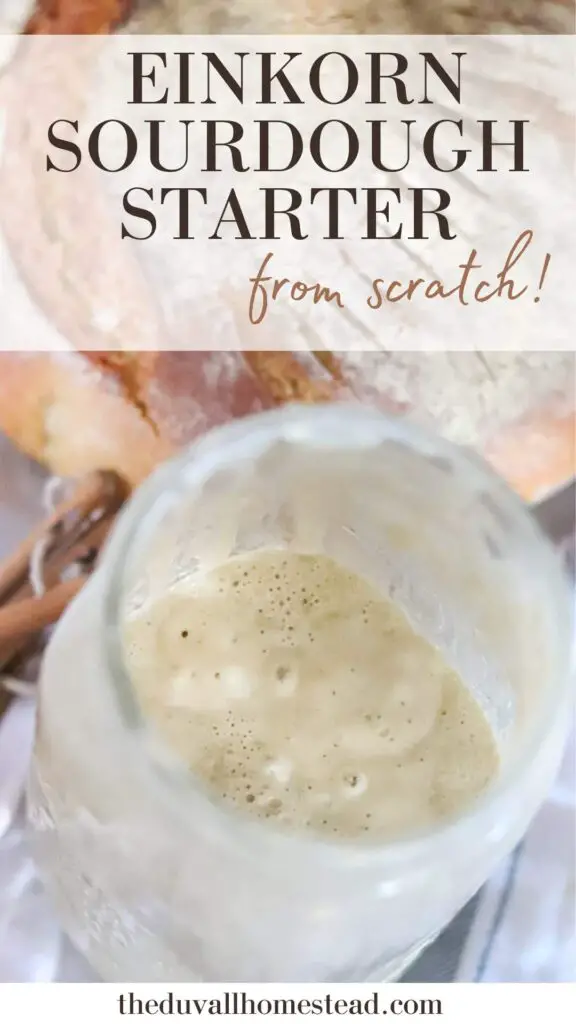
What is sourdough starter?
We’ve enjoyed homemade sourdough bread for over 6 years our homestead with regular all purpose flour. Once I started making my own bread I never went back!
Sourdough starter is made my combining flour and water and letting it sit out at room temperature. Once your starter is active, it contains living microbes that feed on the sugar in the flour and produce carbon dioxide gas. This is the gas that eventually give your bread bubbles.
Sourdough starter is nothing new, although the world seems to have taken a huge liking to it over the last few years. Back in the day before instant active yeast was available, sourdough starter would have been really the only way to create bread.
In fact, sourdough starter is simply fermented grain, and fermentation is exactly how much of the food was preserved back in the day before refrigeration. Only in this case, we’re keeping the grain alive by feeding it flour and water, whereas other forms of fermentation may use salt (for example, fermented sauerkraut) or another grain like milk kefir.
Making your own sourdough bread gives you healthy probiotics through the long fermentation of the flour grain. Sourdough bread is also an excellent source of calcium, magnesium, potassium, folate, and niacin, as well as antioxidants which can help lower the risks of certain cancer, disease, and signs of aging (source: WebMD).
New to Sourdough?
If you are brand new to sourdough starter, you will love using it to make delicious baked goods!
You can learn how to make your own sourdough starter from scratch to make homemade bread, sourdough pizza, bagels, and more.
Put all your sourdough recipes in one spot!
Download and print off this NEW sourdough recipes ebook and keep your favorite sourdough recipes on your counter for easy, every day cooking.


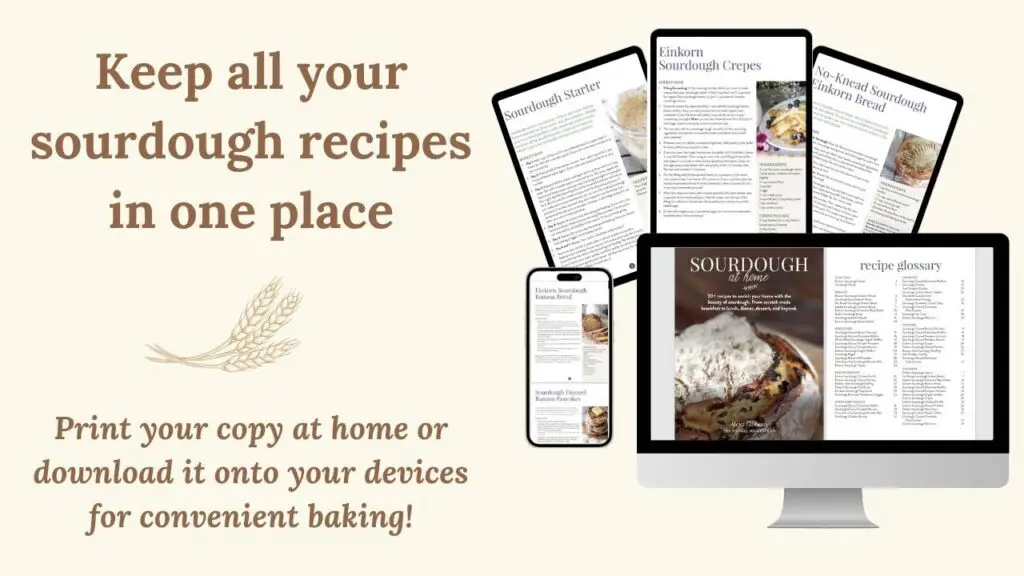

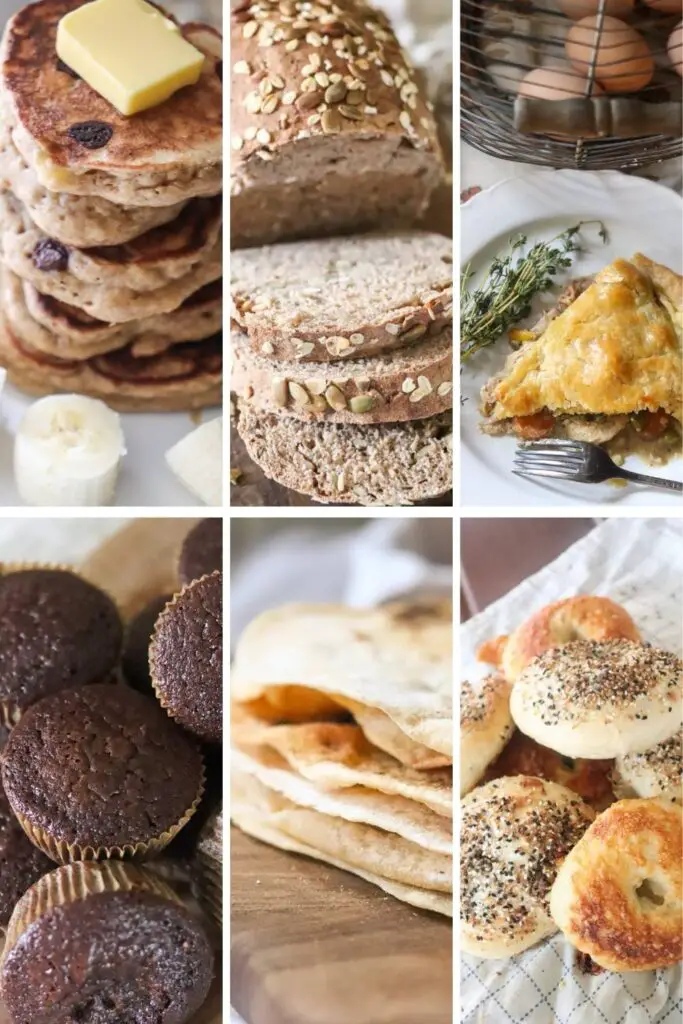
TOOLS NEEDED
Glass bowl or wide mouth mason jar (avoid using plastic)
Measuring cup
Filtered Water
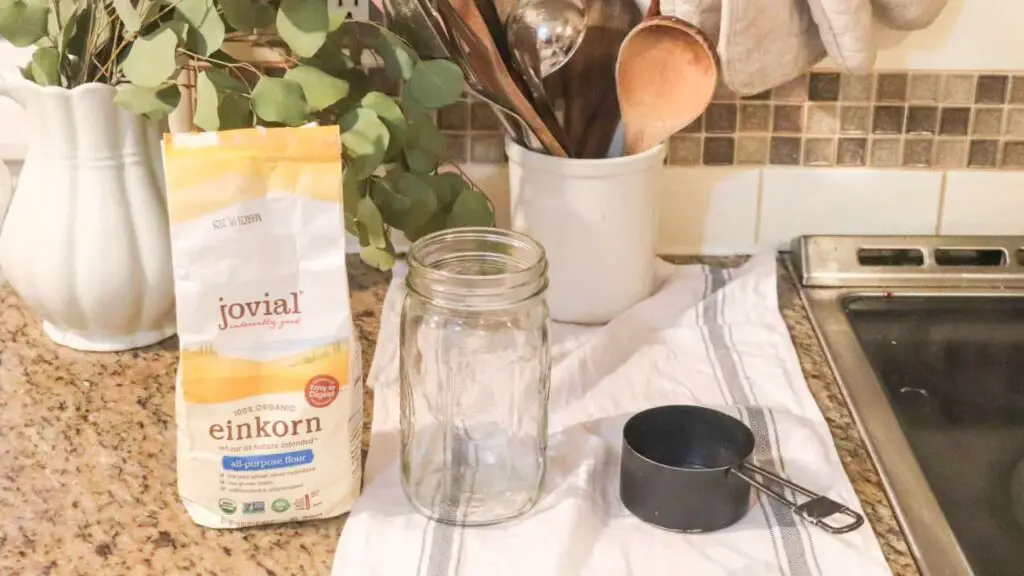
HOMEMADE EINKORN SOURDOUGH STARTER INGREDIENTS
1 cup einkorn flour
1/2 cup filtered water
Note: you will feed twice a day for 3 days, and then once a day for another 3 days (this is just an estimate. Actual times may be shorter or longer depending on your flour, water, and home environment). In total, this would mean you’ll need about 9 cups of einkorn flour.
HOW TO MAKE EINKORN SOURDOUGH STARTER SUMMARY
It takes just under a week for most people to get an active sourdough starter at home. Essentially, you just keep feeding your sourdough starter, then discarding half of it, then feeding it again, then discarding, etc. for a few days until you’ve created a culture of microbes that are strong enough to make bread. Your sourdough starter may take 1-2 days less than mine, or 1-2 days more than mine, depending on your flour, water quality, and home environment, but the overall process is the same either way.
In summary, this is what you’ll do:
Day 1-3: twice a day discarding and feeding, store on countertop
Day 4-6: once a day discard and feeding, store in fridge
Just follow the timeline below to make your own einkorn sourdough starter at home.
HOMEMADE EINKORN STARTER STEP BY STEP
Day 1 (morning): In a glass bowl or wide mouth mason jar, combine 1 cup einkorn flour and 1/2 cup filtered water. Place the bowl or jar in a warm place in your house, such as near the stove or a fireplace. Stir with a wooden spoon. Place a tea towel over the starter so it is covered, but not sealed.
Day 1 (evening): Now you’re going to remove half of the sourdough starter mixture you’ve created. You can move it into a bowl to save for a future “sourdough discard” recipe, compost it, or feed it to farm animals if you have any.
After you’ve discarded half the starter, feed it the same amount as the first time: 1 cup flour, 1/2 cup water.
Then, stir with a wooden spoon and cover with a tea towel. Again, place the starter in a warm location in your home.
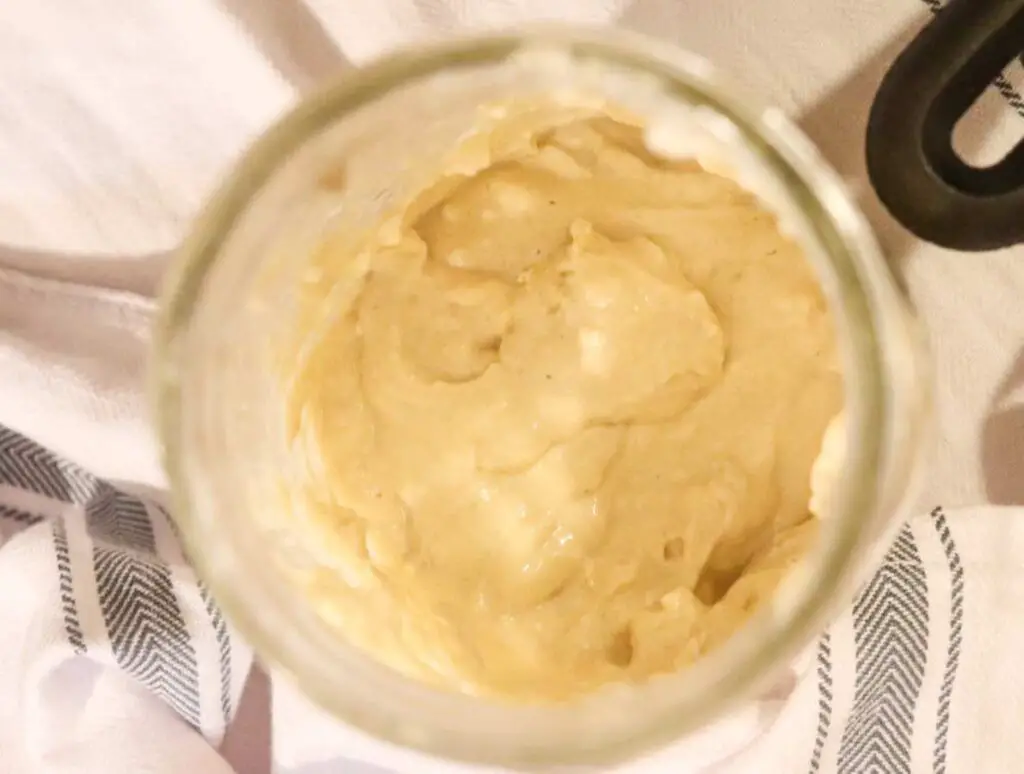
Day 2 (morning): repeat the steps from day 1: discard half, then feed again. Cover with a tea towel and let sit out on your counter.
Day 2 (evening): repeat discard and feeding. Again, cover with a tea towel.
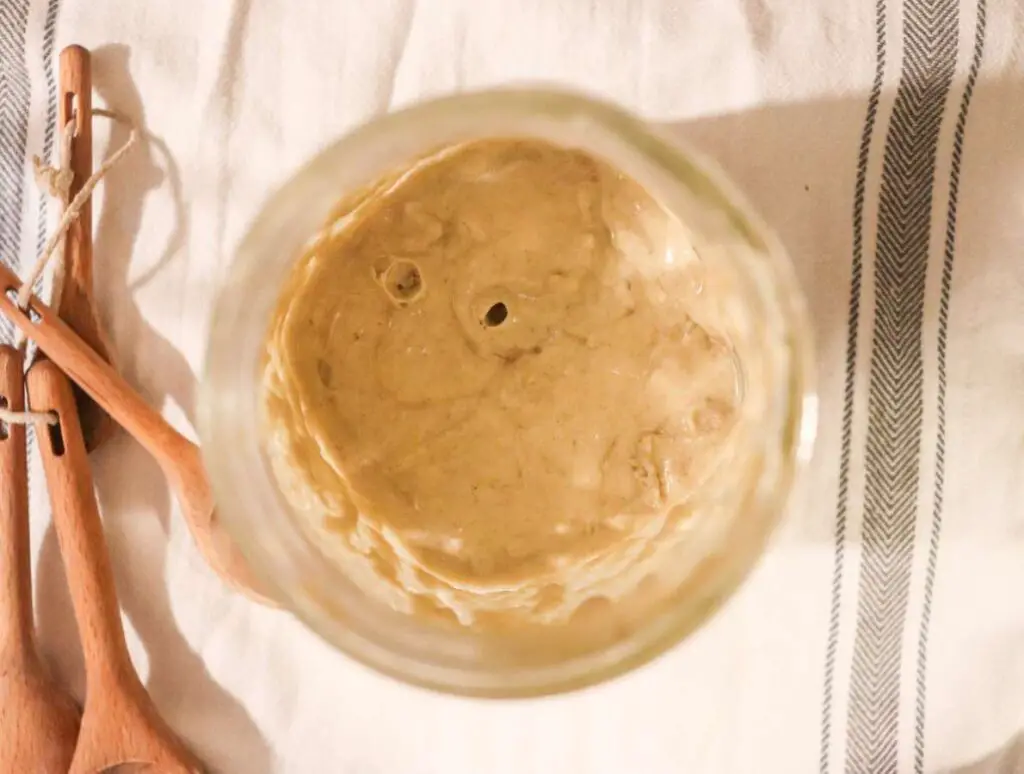
Day 3 (morning): repeat discard and feeding. Cover with a tea towel and let sit out.
Day 3 (evening): repeat discard and feeding. At this point, you may start to see bubbles forming in your sourdough starter! Once you start to see bubbles, you can place your starter in the fridge overnight instead of the countertop. This will slow down the feeding process so you don’t get starter that’s over-hungry.
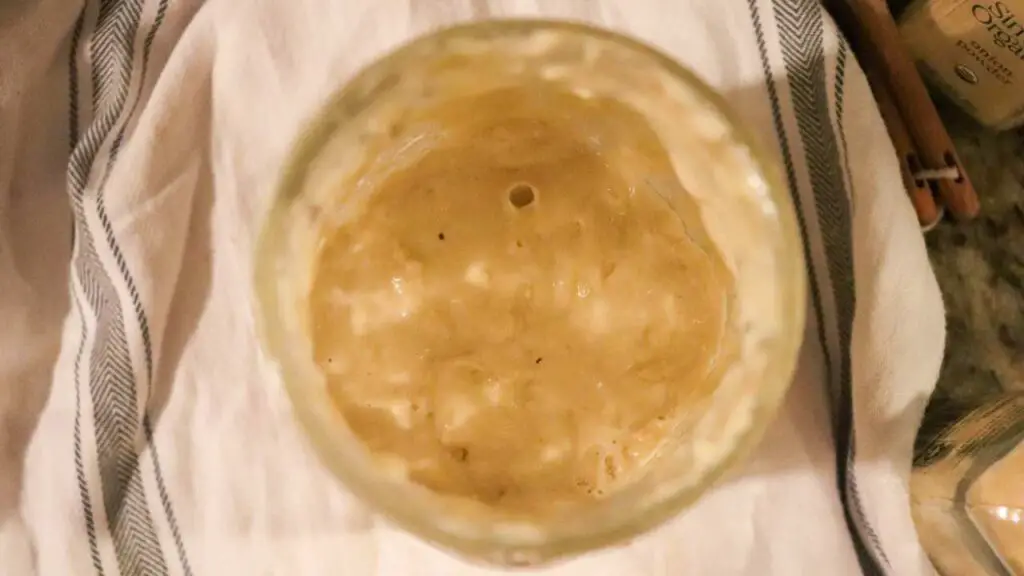
Day 4 (morning): repeat discard and feeding. By day 4, you should have a couple bubbles in your starter and you will switch to feeding only once per day. After the feeding on day 4, let the starter sit out for 6-8 hours, and then put it in the fridge for the night.
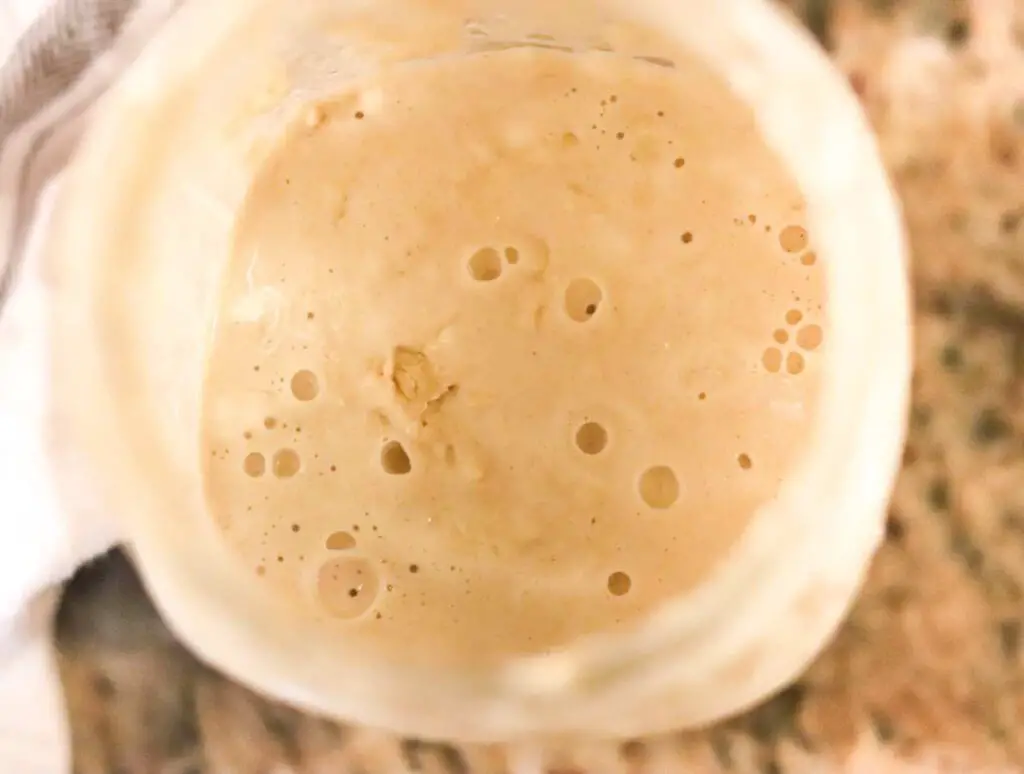
Day 5-6: repeat a once a day discard and feeding until your starter doubles in size. You know your start is done when, after letting it sit for 6-8 hours after a feeding, it becomes very bubbly and doubles in size. At that point, your starter is ready to bake!
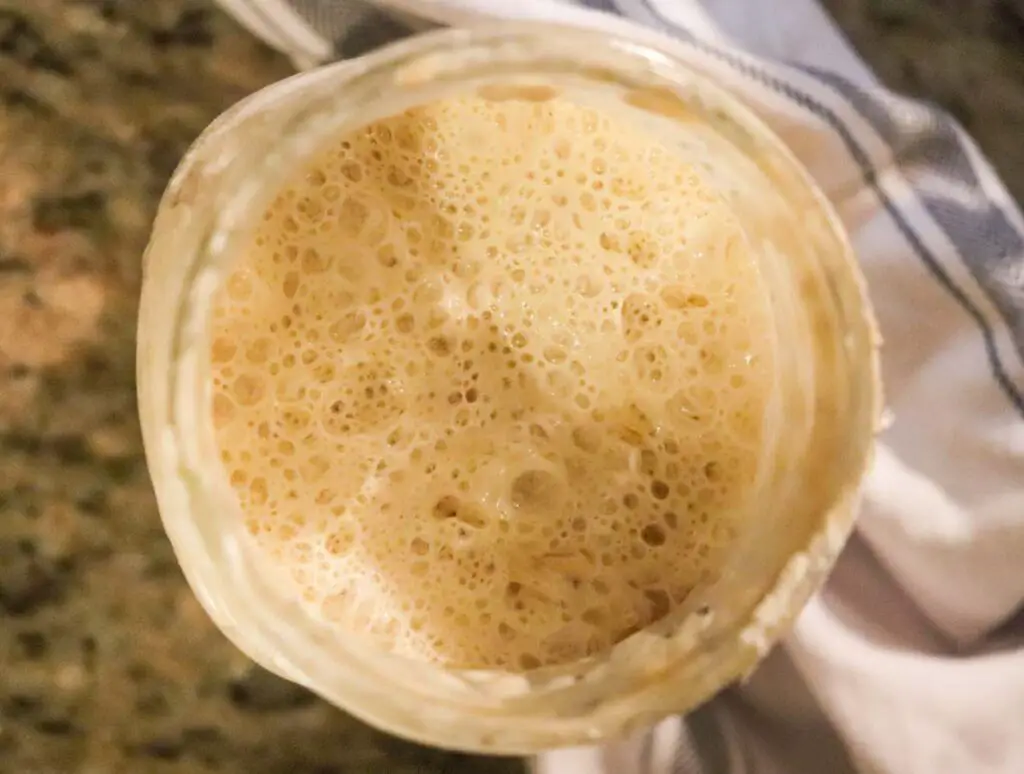
What to do once you have an established einkorn starter
When you are not using your starter, keep it in the fridge. It can stay in the fridge for several weeks without a feeding, but I suggest pulling your starter out at least once a week for a feeding and, of course, to make a bread recipe.
Here’s an example baking schedule for sourdough bread:
In the morning the day BEFORE you want to bake your bread, take your starter out of the fridge. It may not look bouncy and bubbly anymore since it’s been sitting in the fridge without a feeding for a week now. It may also have a sharp, nail polish remover-like smell to it, with a grey looking liquid on top. This is totally normal! It just means your starter is hungry. Just give it a stir and move on to the below.
Next, feed your starter 1 cup einkorn flour and 1/2 cup filtered water. Stir. Leave it on your countertop all day and in the late afternoon you should see it come to life, become bubbly, and double in size. This is now known as “active starter”, whereas the starter you pulled out of the fridge is known as “sourdough discard”. Now you can start your bread!
Next you’ll follow an einkorn sourdough bread recipe. Here’s mine: Combine 1 cup of the fed, active starter with 1.5 cups filtered water and 1.5 tsp salt. Whisk with a fork. Then add 4 cups of einkorn flour and fold with your hands into a loose dough.
Next, follow the instructions in this homemade bread for beginners post and enjoy your first loaf of bread.

Tips for Mastering your Sourdough Skills
- Sourdough starter gets stronger with time. So the starter you create in one week won’t be as good as the starter you’ll have a year from now. So be patient, and keep working with it! It took me several loaves of bread to get my sourdough starter and bread making skills right. I watched tons of YouTube videos, purchased and read books, and was patient with the whole process. I promise, you’ll get it!
- Bread didn’t turn out? My motto is, never throw a loaf of bread away. If the bread isn’t to your liking, try using it to make sourdough French toast. Or, chop it up into cubes, drizzle with olive oil and salt, and add it to the bottom of a roasted chicken to serve with dinner. Lastly, you can chop it up and add it to a food processor to make homemade bread crumbs.
- Always keep your starter in a warm location in your home. Sourdough thrives in a home that is between 68-72 degrees. In the winter, I keep my einkorn sourdough starter on my stovetop or by the fire to keep it warm. In the summer, our house is already warm so I don’t worry about where the starter sits.
- Sourdough is very resilient and you almost cannot kill it. If you put it in the fridge for a while and forget to feed it for a couple weeks, it is probably just fine. The active cultures will be weakened and need more time to come to life, but they are still there and ready to go. Just feed it and let sit on your countertop. It may even take 1-3 discards feedings for it to get back to it’s regular strength again. You almost cannot kill it.
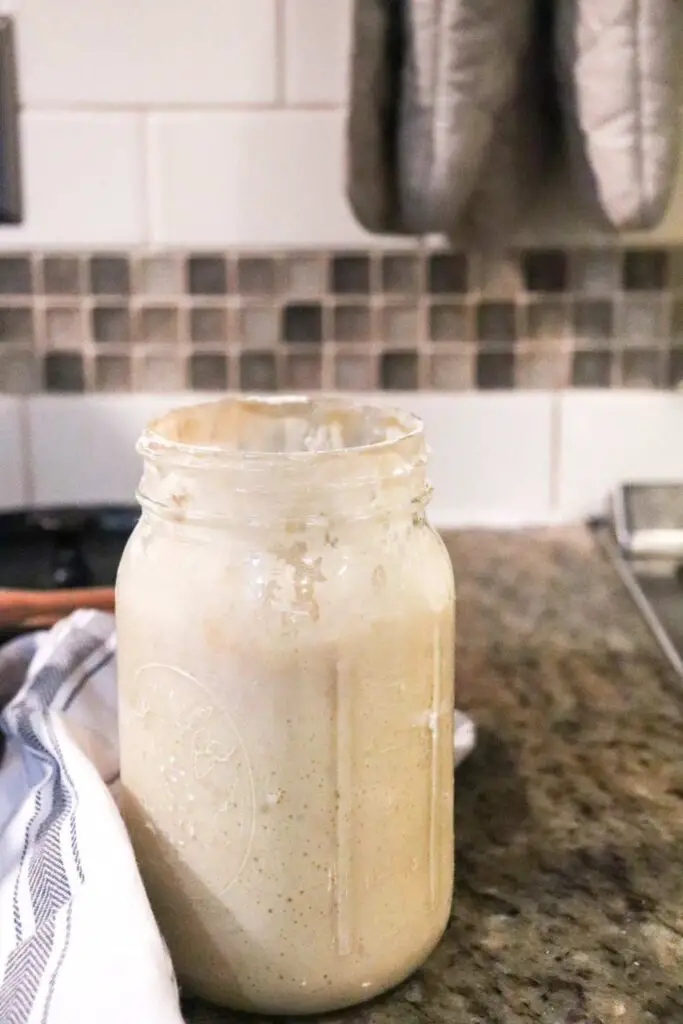
FAQs:
HOW MUCH DO YOU FEED EINKORN SOURDOUGH STARTER?
Einkorn sourdough starter does well with a feeding of 1 cup flour and 1/2 cup filtered water. You generally want the sourdough starter to be thick like pancake dough. If it’s too runny, add more flour. If it’s too thick, add more water. With a little bit of practice you’ll start seeing what it should look like and this will become very easy for you!
DOES THIS MAKE EINKORN FLOUR GLUTEN-FREE?
No, einkorn flour still contains gluten. But the fermentation and active cultures in the starter eat away at the sugar in the gluten and help strip down the phytic acid in the grain, which is what makes non-fermented grain difficult to digest. Sometimes people who cannot tolerate grains normally are able to eat einkorn sourdough for this reason.
Additionally, einkorn flour generally contains less gluten and is higher in protein, which is why it’s easy to digest in the first place. However, a lower gluten content does make einkorn a more difficult flour to make bread with than a grain with a higher gluten content.
MY STARTER HAS GREY LIQUID ON TOP AND SMELLS LIKE NAIL POLISH REMOVER. IS IT BAD?
No, this is totally normal and your starter is just hungry. Usually this happen when the starter has been put in the fridge for several days. Just pull the starter out like normal, feed it, and give it a good stir. Cover with a tea towel and let sit on the counter and you’ll see it get right back to normal within a few hours!
More Einkorn Recipes from the Farmhouse:
- Einkorn Dutch Baby Pancake
- Einkorn Sourdough Pie Crust
- Homemade Einkorn Waffles
- Einkorn Chocolate Chip Brownies
- Sourdough Einkorn Peach Cobbler
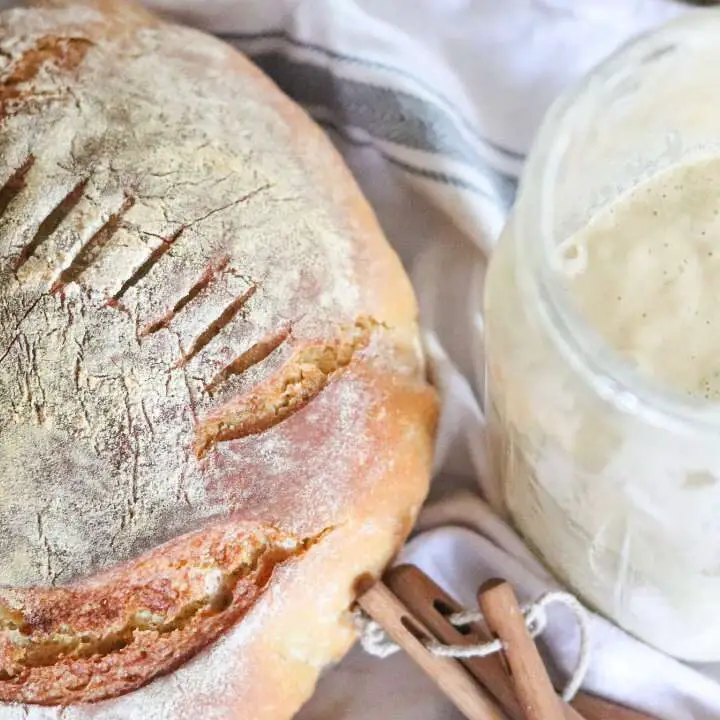
Einkorn Sourdough Starter
Homemade einkorn sourdough starter makes delicious and gut healthy einkorn bread. Follow these simple steps to create your own einkorn sourdough starter at home.
Ingredients
- 1 cup einkorn flour
- 1/2 cup filtered water
- Note: you will feed twice a day for 3 days, and then once a day for another 3 days (this is just an estimate. Actual times may be shorter or longer depending on your flour, water, and home environment). In total, this would mean you’ll need about 9 cups of einkorn flour.
Instructions
- Day 1 (morning): In a glass bowl or wide mouth mason jar, combine 1 cup einkorn flour and 1/2 cup filtered water. Place the bowl or jar in a warm place in your house, such as near the stove or a fireplace. Stir with a wooden spoon. Place a tea towel over the starter so it is covered, but not sealed.
- Day 1 (evening): Now you’re going to remove half of the sourdough starter mixture you’ve created. You can move it into a bowl to save for a future “sourdough discard” recipe , compost it, or feed it to farm animals if you have any.
- After you’ve discarded half the starter, feed it the same amount as the first time: 1 cup flour, 1/2 cup water.
- Then, stir with a wooden spoon and cover with a tea towel. Again, place the starter in a warm location in your home.
- Day 2 (morning): repeat the steps from day 1: discard half, then feed again.
- Day 2 (evening): repeat discard and feeding.
- Day 3 (morning): repeat discard and feeding.
- Day 3 (evening): repeat discard and feeding. At this point, you may start to see bubbles forming in your sourdough starter! Once you start to see bubbles, you can place your starter in the fridge overnight instead of the countertop. This will slow down the feeding process so you don’t get starter that’s over-hungry.
- Day 4 (morning): repeat discard and feeding. By day 4, you should have a couple bubbles in your starter and you will switch to feeding only once per day. After the feeding on day 4, let the starter sit out for 6-8 hours, and then put it in the fridge for the night.
- Day 5-6: repeat a once a day discard and feeding until your starter doubles in size. You know your start is done when, after letting it sit for 6-8 hours after a feeding, it becomes very bubbly and doubles in size. At that point, your starter is ready to bake bread!
Notes
It takes just under a week for most people to get an active sourdough starter at home. Essentially, you just keep feeding your sourdough starter, then discarding half of it, then feeding it again, then discarding, etc. for a few days until you’ve created a culture of microbes that are strong enough to make bread. Your sourdough starter may take 1-2 days less than mine, or 1-2 days more than mine, depending on your flour, water quality, and home environment, but the overall process is the same either way.
In summary, this is what you’ll do:
Day 1-3: twice a day discarding and feeding, store on countertop
Day 4-6: once a day discard and feeding, store in fridge
Just follow the step by step timeline above to make your own einkorn sourdough starter at home.
Pin it for later
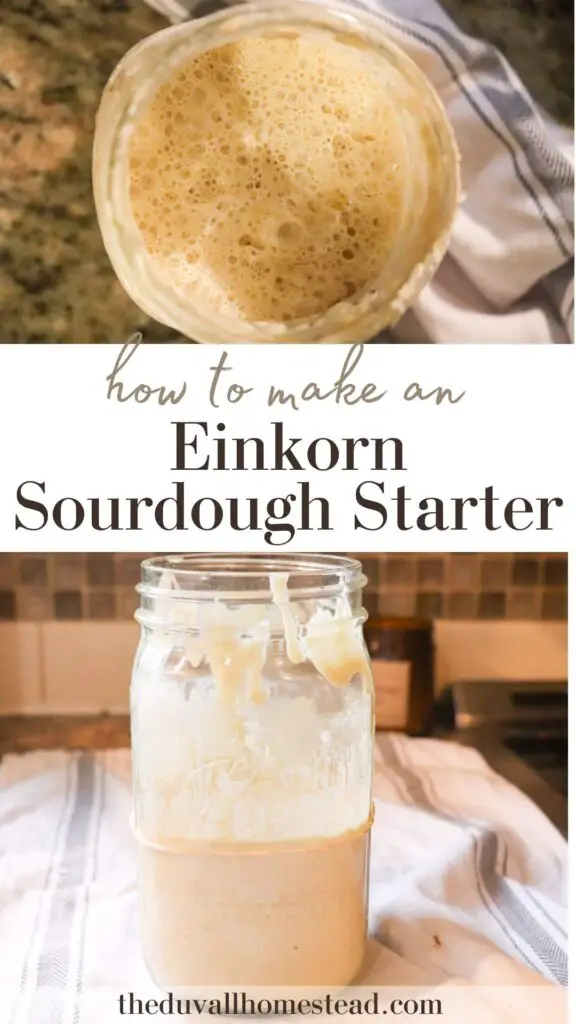

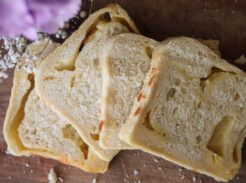

Leave A Comment